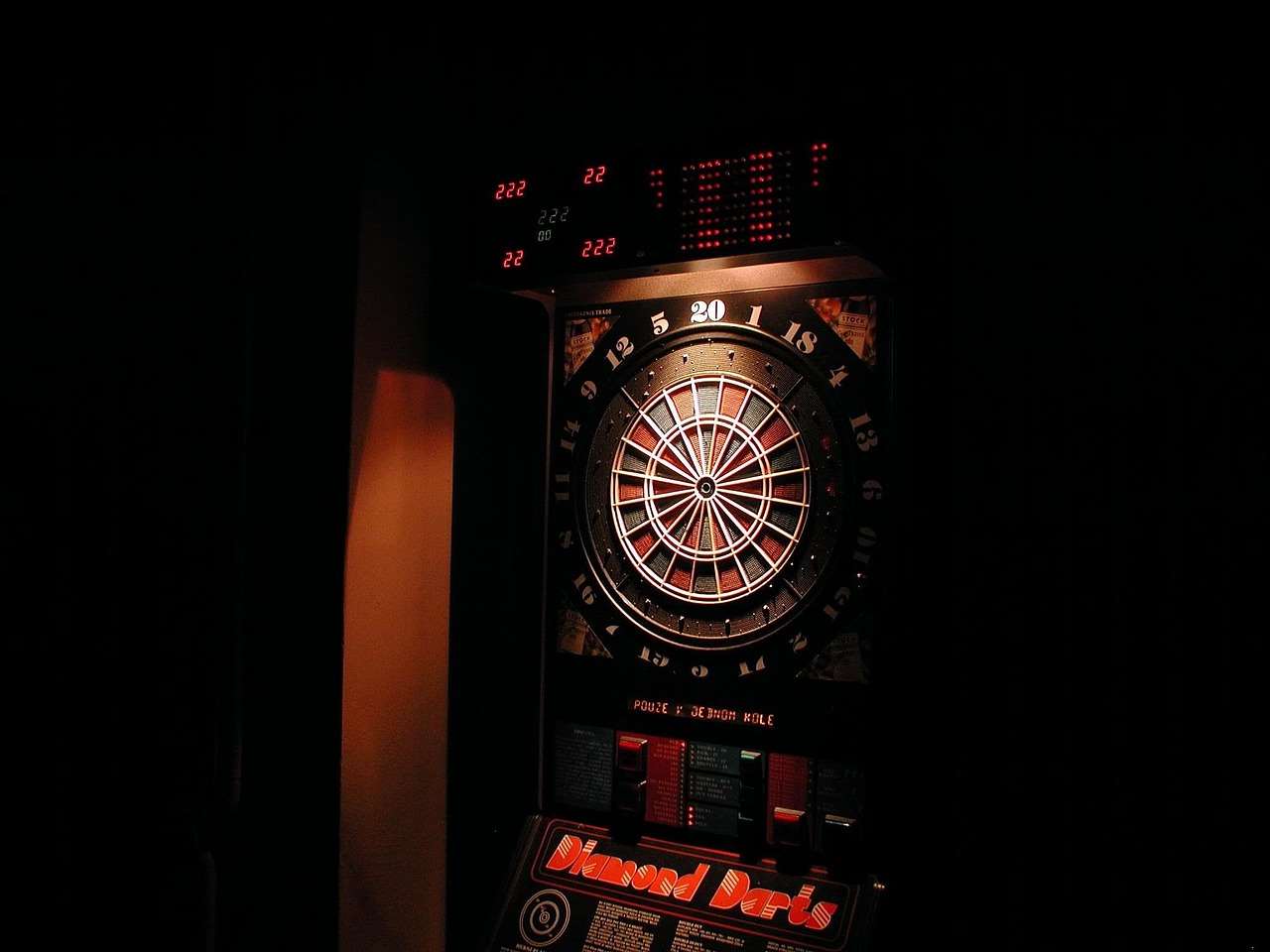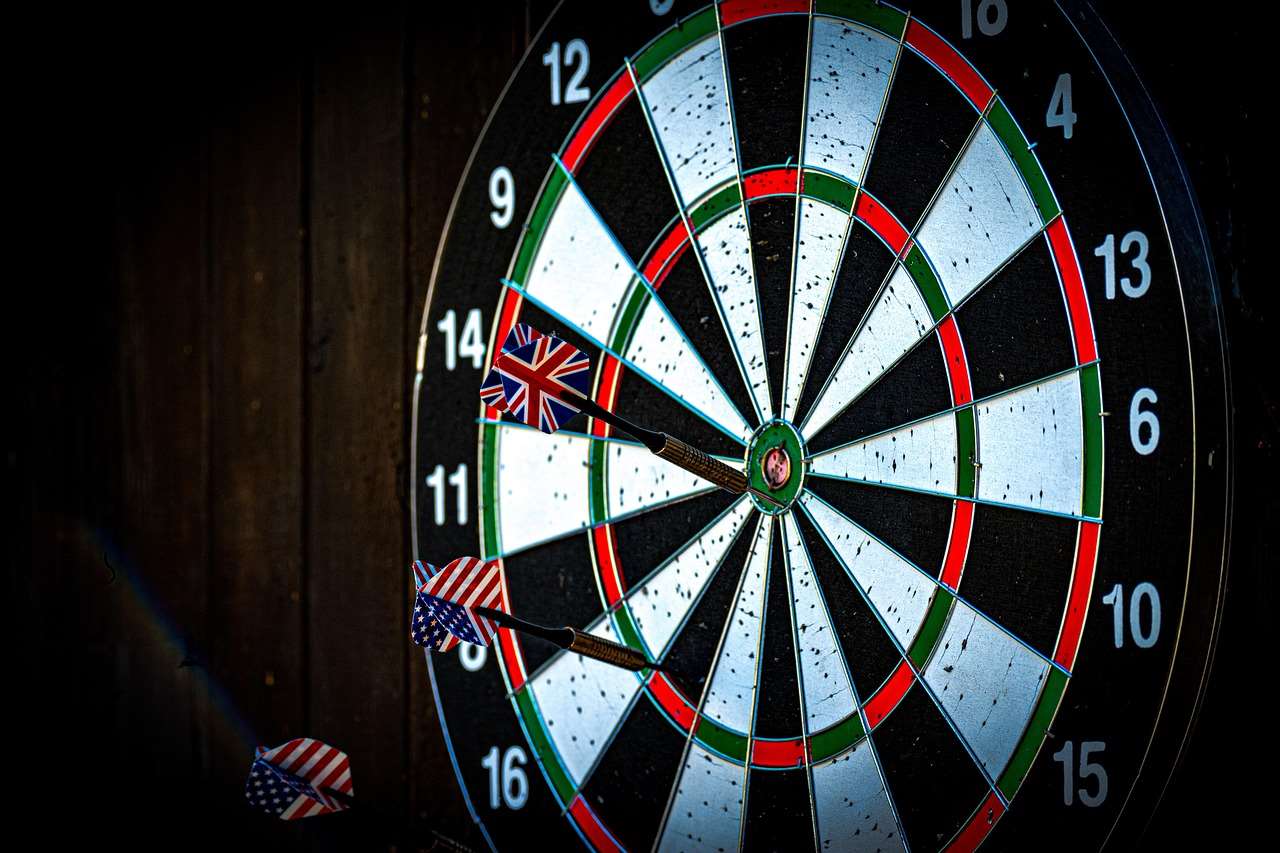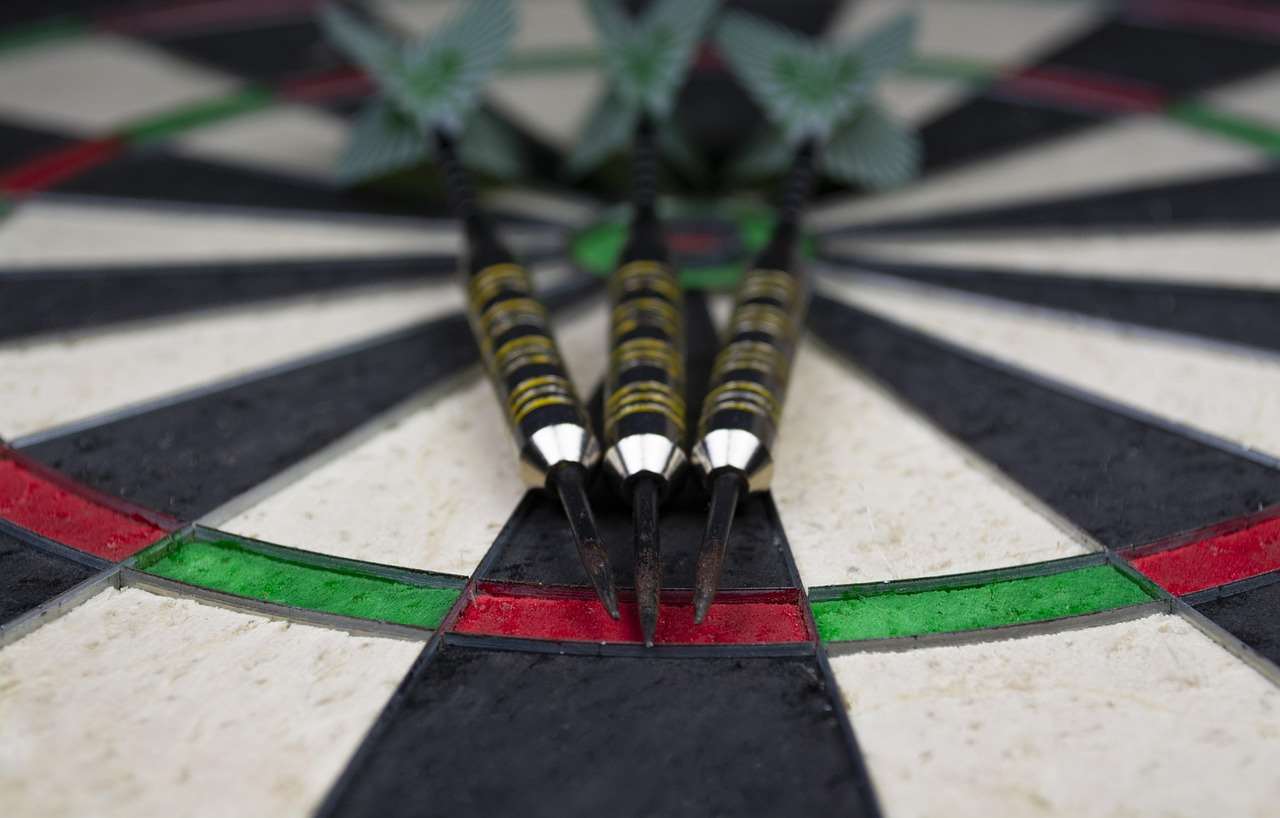Ensuring darts venue health safety compliance is paramount for a safe and enjoyable experience for both staff and patrons; adhering to regulations protects everyone. This article will cover essential aspects of compliance, from risk assessments to hygiene protocols and emergency procedures, equipping you with the knowledge to create a safe darts environment.
⚠️ Still Using Pen & Paper (or a Chalkboard)?! ⚠️
Step into the future! The Dart Counter App handles all the scoring, suggests checkouts, and tracks your stats automatically. It's easier than you think!
Try the Smart Dart Counter App FREE!Ready for an upgrade? Click above!
Understanding Darts Venue Health Safety Compliance
Darts venue health safety compliance is more than just ticking boxes; it’s about creating a culture of safety. This involves understanding relevant legislation, conducting thorough risk assessments, and implementing effective control measures. Neglecting these aspects can lead to accidents, injuries, and potential legal repercussions.

Key areas to consider include:
- Fire safety: Ensuring adequate fire detection and suppression systems, clear escape routes, and trained personnel.
- Electrical safety: Regular inspections and maintenance of electrical equipment to prevent shocks and fires.
- Slips, trips, and falls: Maintaining clear walkways, addressing uneven surfaces, and providing adequate lighting.
- Hygiene: Implementing rigorous cleaning schedules and providing hand sanitizing stations.
- Dartboard safety: Securely mounting dartboards and providing adequate space around the throwing area.
By addressing these areas proactively, you can significantly reduce the risk of accidents and create a safer environment for everyone.
Conducting a Thorough Risk Assessment
A comprehensive risk assessment is the foundation of any effective darts venue health safety compliance plan. This involves identifying potential hazards, assessing the likelihood and severity of harm, and implementing control measures to mitigate the risks. You should regularly review and update your risk assessment to reflect changes in your venue or activities.
Here’s a step-by-step guide to conducting a risk assessment:
- Identify the hazards: Walk around your venue and look for anything that could cause harm. This might include slippery floors, exposed wiring, or poorly lit areas.
- Identify who might be harmed and how: Consider employees, customers, and visitors. Think about how they might be injured or become ill as a result of the hazards you identified.
- Evaluate the risks and decide on precautions: Determine the likelihood and severity of each risk. Then, decide what control measures are needed to reduce the risks to an acceptable level.
- Record your findings and implement them: Write down your risk assessment findings and the control measures you’ve implemented. Share this information with your employees and customers.
- Review your assessment and update it regularly: Risk assessments should be reviewed at least annually, or more frequently if there are significant changes to your venue or activities.
Remember to document all your findings and the actions you take to address the identified risks. This documentation is essential for demonstrating due diligence and compliance with health and safety regulations.
Specific Hazards in Darts Venues
Darts venues have some specific hazards that require particular attention. These include:
- Dartboard mounting: Ensure dartboards are securely mounted to prevent them from falling and causing injury.
- Throwing area: Provide adequate space around the throwing area to prevent collisions and accidental injuries. Mark the oche clearly and enforce rules regarding throwing distances.
- Sharp objects: Darts are sharp objects that can cause puncture wounds. Provide first aid supplies and train staff to handle injuries.
- Alcohol consumption: Excessive alcohol consumption can lead to impaired judgment and increased risk of accidents. Implement responsible alcohol service policies and train staff to recognize and manage intoxicated customers.

Addressing these specific hazards is crucial for maintaining a safe and enjoyable environment for all.
Implementing Effective Control Measures
Once you’ve identified the risks, the next step is to implement effective control measures. These are actions you take to reduce the likelihood or severity of harm. Control measures can range from simple solutions like putting up warning signs to more complex measures like installing safety equipment.
Common control measures for darts venue health safety compliance include:
- Elimination: Removing the hazard altogether. For example, replacing a damaged dartboard with a new one.
- Substitution: Replacing a hazardous substance or activity with a safer alternative. For example, using plastic-tipped darts instead of steel-tipped darts.
- Engineering controls: Implementing physical changes to the workplace to reduce the risk. For example, installing safety barriers around the throwing area.
- Administrative controls: Implementing procedures or policies to reduce the risk. For example, providing training on safe dart throwing techniques.
- Personal protective equipment (PPE): Providing employees with equipment to protect them from hazards. For example, providing employees who handle cleaning chemicals with gloves and eye protection.
When choosing control measures, prioritize the most effective options. Elimination and substitution are generally preferred over engineering controls, administrative controls, and PPE. Make sure your control measures are practical, feasible, and properly implemented.
Consider also implementing responsible alcohol service policies to further enhance patron safety, and ensure your staff are well-trained to follow them.

Hygiene and Sanitation Protocols
Maintaining high standards of hygiene and sanitation is essential for preventing the spread of infections and illnesses. This is especially important in venues where people are in close proximity, such as darts venues. Implement a rigorous cleaning schedule and provide adequate hand sanitizing stations. Maintaining a clean environment also contributes to better Business of Darts.
Key hygiene and sanitation protocols include:
- Regular cleaning of surfaces: Clean and disinfect frequently touched surfaces, such as tables, chairs, dartboards, and door handles.
- Hand sanitizing stations: Provide hand sanitizing stations at entrances, exits, and throughout the venue.
- Proper waste disposal: Provide adequate waste disposal containers and empty them regularly.
- Food safety: If you serve food, ensure that it is prepared and stored safely. Follow all relevant food safety regulations.
- Ventilation: Ensure adequate ventilation to remove stale air and prevent the buildup of contaminants.
Train your staff on proper hygiene and sanitation procedures and ensure that they follow them consistently. Encourage customers to practice good hygiene, such as washing their hands regularly.
Fire Safety Measures
Fire safety is a critical aspect of darts venue health safety compliance. A fire can quickly spread and cause serious injuries or fatalities. Implement comprehensive fire safety measures to prevent fires and ensure the safe evacuation of occupants in the event of a fire.
Essential fire safety measures include:
- Fire detection and suppression systems: Install fire alarms, smoke detectors, and fire extinguishers throughout the venue. Regularly inspect and maintain these systems.
- Clear escape routes: Ensure that escape routes are clearly marked and free from obstructions. Conduct regular fire drills to familiarize occupants with the escape routes.
- Fire safety training: Provide fire safety training to all employees. Train them on how to use fire extinguishers, how to evacuate the building, and how to assist customers with disabilities.
- Flammable materials: Store flammable materials properly and keep them away from sources of ignition.
- Electrical safety: Regularly inspect and maintain electrical equipment to prevent electrical fires.

Develop a fire safety plan and share it with your employees and customers. Review the plan regularly and update it as needed. Compliance with local fire codes is essential, and you should consult with your local fire department for guidance.
Emergency Procedures and First Aid
It’s crucial to have well-defined emergency procedures in place to handle various situations, such as medical emergencies, fires, or security threats. Train your staff on these procedures and conduct regular drills to ensure they are prepared to respond effectively. Ensuring you have adequate first aid facilities can be life-saving.
Key emergency procedures include:
- Medical emergencies: Train staff on basic first aid and CPR. Keep a well-stocked first aid kit on hand. Have a plan for contacting emergency medical services.
- Fire emergencies: Follow your fire safety plan, evacuate the building, and call the fire department.
- Security threats: Have a plan for responding to security threats, such as violent customers or intruders. Consider installing security cameras and hiring security personnel.
- Communication: Establish a clear communication system to alert occupants of emergencies and provide updates.
Regularly review and update your emergency procedures to ensure they are effective and relevant. Conduct drills to test your procedures and identify areas for improvement.
First Aid Kit Essentials
Your first aid kit should contain the following essential items:
- Bandages
- Gauze pads
- Adhesive tape
- Antiseptic wipes
- Pain relievers
- Scissors
- Tweezers
- Gloves
- CPR mask
Ensure that your first aid kit is easily accessible and that staff members know its location. Regularly check the kit to ensure that all items are in good condition and that expired items are replaced.

Staff Training and Communication
Effective staff training and communication are essential for ensuring darts venue health safety compliance. Your staff are your first line of defense in preventing accidents and responding to emergencies. Provide them with the knowledge and skills they need to perform their jobs safely and effectively.
Key training topics include:
- Health and safety regulations: Educate staff on relevant health and safety regulations and their responsibilities.
- Risk assessment: Train staff on how to identify hazards and report them.
- Control measures: Train staff on how to implement and maintain control measures.
- Emergency procedures: Train staff on emergency procedures, such as fire evacuation and first aid.
- Hygiene and sanitation: Train staff on proper hygiene and sanitation procedures.
- Responsible alcohol service: Train staff on responsible alcohol service policies and how to recognize and manage intoxicated customers.
Communicate regularly with your staff about health and safety issues. Encourage them to report hazards and suggest improvements. Create a culture of safety where everyone feels empowered to speak up.
Consider how how darts media deals work can also provide valuable insights into safety protocols through sponsored campaigns.
Regular Inspections and Maintenance
Regular inspections and maintenance are crucial for identifying and addressing potential hazards before they cause accidents. Implement a schedule for inspecting your venue and equipment and address any issues promptly. Proactive maintenance is a key element of good practice for darts venue health safety compliance.
Key inspection and maintenance tasks include:
- Electrical equipment: Inspect electrical equipment regularly for signs of damage or wear. Have a qualified electrician perform periodic inspections.
- Fire safety equipment: Inspect fire extinguishers, smoke detectors, and fire alarms regularly to ensure they are in good working order.
- Dartboards: Inspect dartboards regularly for damage or wear. Replace damaged dartboards promptly.
- Floors and walkways: Inspect floors and walkways for hazards, such as slippery surfaces or uneven areas. Address any issues promptly.
- Lighting: Ensure that lighting is adequate throughout the venue. Replace burned-out bulbs promptly.
Keep records of all inspections and maintenance activities. This documentation is essential for demonstrating due diligence and compliance with health and safety regulations.
Staying Up-to-Date with Regulations
Health and safety regulations are constantly evolving. It’s essential to stay up-to-date with the latest requirements and ensure that your venue complies with all applicable laws. Consider subscribing to industry publications and attending training courses to stay informed.
Resources for staying up-to-date with regulations include:
- Government agencies: Check the websites of relevant government agencies for updates on health and safety regulations.
- Industry associations: Join industry associations that provide information and resources on health and safety compliance.
- Health and safety consultants: Hire a health and safety consultant to help you stay up-to-date with regulations and implement effective safety measures.
Regularly review your health and safety policies and procedures to ensure they are consistent with the latest regulations. Seek legal advice if you are unsure about any aspect of health and safety compliance. Consider also if a darts tv rights value increase could cover investing further in these measures.
Conclusion
Prioritizing darts venue health safety compliance isn’t just about following rules; it’s about fostering a secure and enjoyable environment for everyone. By implementing the strategies outlined in this article – from conducting thorough risk assessments and implementing control measures to prioritizing hygiene, fire safety, and staff training – you can significantly reduce the risk of accidents and create a safer, more welcoming venue. Take action today to review your current practices and implement necessary improvements, ensuring the well-being of your staff and patrons and fostering a thriving darts community. For further assistance, consult with a health and safety professional to tailor a compliance plan specific to your venue’s needs.
Hi, I’m Dieter, and I created Dartcounter (Dartcounterapp.com). My motivation wasn’t being a darts expert – quite the opposite! When I first started playing, I loved the game but found keeping accurate scores and tracking stats difficult and distracting.
I figured I couldn’t be the only one struggling with this. So, I decided to build a solution: an easy-to-use application that everyone, no matter their experience level, could use to manage scoring effortlessly.
My goal for Dartcounter was simple: let the app handle the numbers – the scoring, the averages, the stats, even checkout suggestions – so players could focus purely on their throw and enjoying the game. It began as a way to solve my own beginner’s problem, and I’m thrilled it has grown into a helpful tool for the wider darts community.